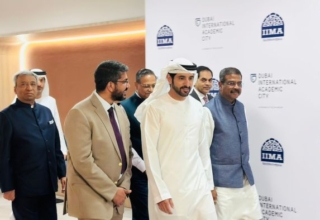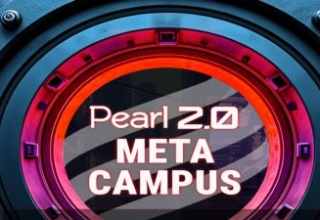
Fashion and design education provider, Pearl Academy with 4600 students spread across four campuses in Delhi, Noida, Jaipur and Mumbai, will be launching online courses from next year. The academy which has added a school of Media and Journalism this year, is already catering to mid-career and fashion/design hobbyists through a weekend course program. The online programs to be announced later, will add to Pearl’s outreach and positioning as a major provider in its category.
Addressing a press conference, Professor Nandita Abraham, CEO Pearl Academy said that by 2020 the domestic demand for designer professionals in various fields will be to the tune of 63,000 and as such Pearl Academy is consciously preparing to expand its footprint to produce more quality professionals. Prof Abraham, in her current role that she took up about two years ago, has infused a new energy and thinking in Pearl Academy and helped it position differently from the peer institutions
Taking a complete shift from past, the Pearl Academy’s flagship annual event ‘What is Next’—Education for Tomorrow, held on November 23 at its Rajouri Garden campus in New Delhi defined this shift as the confluence engaged school leaders overwhelmingly. Last year, it has introduced a session but this time, it was all about engagement with schools. According to Abraham, there is a need for professional education institutes like Pearl Academy to engage at two levels. “One is of course at the industry level, which has been a sort of norm but on the other end we need to engage with school because the student comes from there besides propagation of design education needs to spread in this country far more.,” she added.
 The 7th edition of ‘What’s Next’, a World Café style confluence, divided into three sessions around the themes – Setting the context, Building a shared perspective and Preparing the learner for future, attracted more than 100 principals, school leaders, teachers and thought leaders from across India. Biju Dominic, CEO, Final Mile Consulting, and Geetanjali JB, Head, Academics, Himalayan Institute of Alternatives, Ladakh, were the keynote speakers.
The 7th edition of ‘What’s Next’, a World Café style confluence, divided into three sessions around the themes – Setting the context, Building a shared perspective and Preparing the learner for future, attracted more than 100 principals, school leaders, teachers and thought leaders from across India. Biju Dominic, CEO, Final Mile Consulting, and Geetanjali JB, Head, Academics, Himalayan Institute of Alternatives, Ladakh, were the keynote speakers.
Dominic while making his passionate presentation on neuroscience of no-conscious mind said that educationists need to work for the same dopamine release for curiosity of creation and discovery of knowledge the same several things including junk food and cola does even after we leave no stone unturned to tell children to refrain from their consumption. “It is a science, that aha moment that these things give a child overrides all logic. Can we create such moments in teaching/learning?” he questioned. He added that the construct and design of the education system should be such that children get highs from studies. He also lambasted the current education system which calls collaboration or discussion as ‘copying’.
Geetanjali JB of Himalayan Institute of Alternatives spoke about the highly appreciated education experiment of SECMOL in Ladakh. She said that next revolution is going to be the evolution of human being in totality. “Next currency is going to be the commonsense as artificial intelligence and robotics takes over. Head, heart and hands will be the new literacy tools,” she said.
She also shared how failure in studies is rewarded at her school by way of putting the failed students into real life entrepreneurial skill development and incubations. She further added, “Students need to realise that ability to fail and rebound is what will drive them towards success. They need to be equipped with applied knowledge, which will further prepare them to deal with real-time challenges. And it is important for us to catch their curiosity, empower them to ask questions and answer them all. Let us not make education a utilitarian figure just to get good jobs.”
The interactive sessions saw principals, leaders of high school education, industry experts and career counsellors came up with interesting and practically implementable ideas to build connected communities, empower learners and prepare them for future. In an interesting format the participants were also asked to choose five top skills of future which emerged around building value system, co creation and collaboration, critical thinking, allowing failure, curiosity etc.








